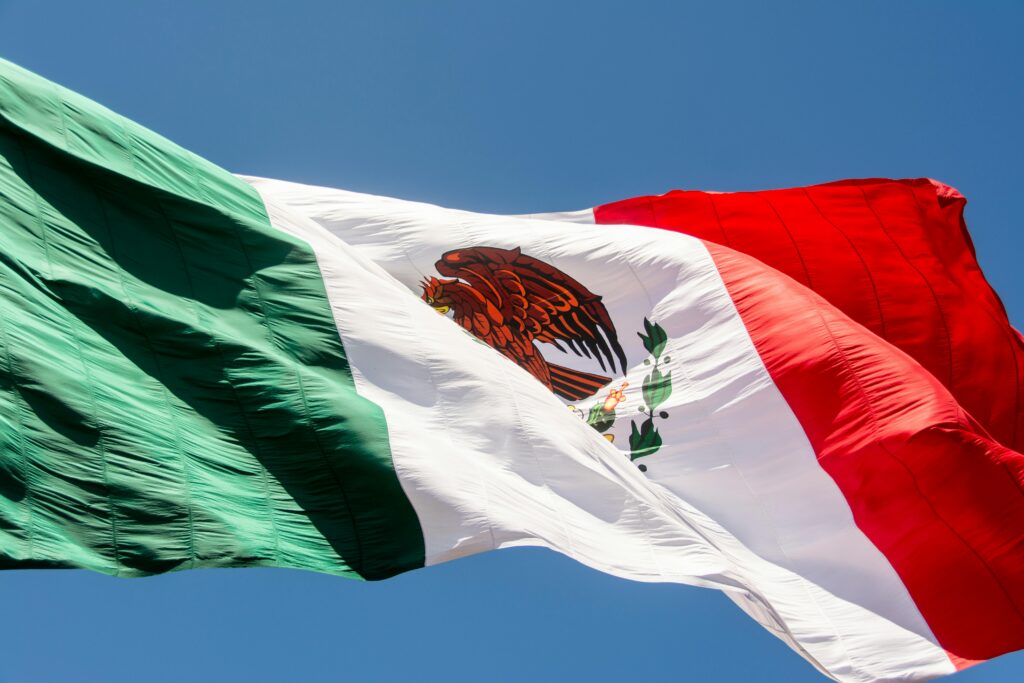
Introduction
When it comes to doing business across Latin America, understanding how people pay is more than just a nice-to-know it’s essential. The region is buzzing with innovation, especially in the world of digital payments, and each country brings its own flavor to the mix. From Brazil’s lightning-fast Pix system to Argentina’s creative digital wallet culture, there’s a lot going on beneath the surface.
At Yogupay, we know that cross-border payments can be tricky, especially when every market has its own unique set of habits, technologies, and expectations. That’s why we’re diving into the payment trends shaping four of Latin America’s biggest economies, Brazil, Mexico, Argentina, and Colombia. Whether you’re expanding your e-commerce operations or simply exploring new markets, getting a handle on these trends can give you the edge you need to move money smarter and faster.

Brazil: Pioneering Real-Time Payments with Pix
If there’s one country in Latin America that’s setting the pace for digital payments, it’s Brazil. The big star of the show? Pix. Launched by the Central Bank of Brazil in 2020, Pix has taken the country by storm and completely changed how people and businesses send and receive money. It’s instant, available 24/7, and best of all, it’s free for individuals. That combination has made it a favorite across the board from street vendors to major retailers.
Pix is not just convenient. It’s also pushing financial inclusion forward by making it easier for unbanked and underbanked populations to access financial services. Thanks to its mobile-first approach, people who never had access to traditional banking can now participate in the digital economy with just a smartphone.
The rise of digital banks like Nubank and platforms like Mercado Pago has added even more fuel to the fire. These fintech companies are giving users slick, user-friendly experiences and are quickly becoming the go-to choice for everything from daily transactions to online shopping.
E-commerce is booming too. Brazil’s domestic online market is projected to grow by nearly 40 percent, and its cross-border e-commerce is on track to expand by over 20 percent in the coming years. That means more Brazilians are not just buying locally, but also exploring international options which is huge for cross-border businesses.
In short, Brazil is showing the world what’s possible when innovation meets demand. If you’re looking to do business in Latin America, Brazil’s payment scene is one you definitely want to keep an eye on.

Mexico: Balancing Tradition and Innovation
Mexico is an interesting mix of old-school habits and modern innovation when it comes to payments. On one hand, cash is still king in many parts of the country. It’s common to see people paying for groceries, bus fares, or even rent in cash. On the other hand, there’s a big push toward digital transformation and it’s gaining real momentum.
One of the most exciting things happening in Mexico’s payment space is the rise of real-time systems like SPEI and the newer DiMo. SPEI (short for Interbanking Electronic Payment System) has been around for a while, but its popularity is growing fast thanks to mobile banking and fintech apps. DiMo is also catching on as a more user-friendly alternative that lets people transfer money instantly using just a phone number.
Another interesting trend in Mexico is the role of OXXO stores. These convenience stores are everywhere and we mean everywhere. They’ve become key players in the country’s payment ecosystem, offering people a place to pay bills, top up wallets, and even make online purchases with cash. It’s a clever way to bridge the gap between the cash economy and the digital world.
E-commerce is also heating up. Cross-border shopping already makes up a solid chunk of Mexico’s online activity and is expected to grow by more than 40 percent each year through 2026. That means more Mexican consumers are comfortable buying from international stores, which is great news for businesses expanding into the region.
Mexico is walking the line between tradition and tech, and it’s doing it with style. For companies thinking about cross-border payments, Mexico offers a dynamic and evolving landscape that’s full of opportunity.

Argentina: Navigating Economic Challenges with Digital Ingenuity
Argentina has always had a unique approach to money, and it’s no surprise that its payment trends are just as distinctive. With inflation constantly on the rise and an economy that’s anything but predictable, people in Argentina have learned to be creative when it comes to managing their finances and that creativity is showing up in how they pay.
One standout feature of Argentina’s payment scene is the growing use of digital wallets. Apps like Mercado Pago and MODO have become everyday essentials, helping millions of people pay bills, transfer money, shop online, and even split the tab at dinner. In fact, digital wallets are now one of the most popular ways to pay for online purchases in Argentina, especially for those looking to avoid the complications of traditional banking.
Another interesting trend is the rise of Buy Now, Pay Later options. With the cost of goods constantly fluctuating, many consumers prefer to spread out payments over time, giving them more flexibility and control over their spending. This is especially common in e-commerce, where customers can buy now and settle the bill in installments.
Argentina is also taking steps toward real-time payments through an initiative called Transfers 3.0. This system supports instant transfers between banks and digital wallets using QR codes that work across different platforms. That means someone using one app can pay someone else using a completely different one, instantly and hassle-free. It’s a big step toward building a more connected and accessible financial ecosystem.
In a country where financial stability is hard to come by, Argentinians are finding smart and flexible ways to take charge of their money. For businesses looking to expand into Argentina, understanding these local preferences is key to building trust and offering the right payment options.

Colombia: Embracing Fintech and the Digital Shift
Colombia is quickly becoming one of Latin America’s most exciting fintech hubs. Over the past few years, the country has seen a real digital transformation in how people manage and move their money. From traditional banks rolling out digital services to a wave of new fintech startups entering the scene, Colombia is embracing change with open arms.
One of the most noticeable shifts is the move away from cash. While cash still plays a role, especially in rural areas, digital payments are becoming more common every day. Mobile wallets like Nequi and Daviplata are leading the charge. These platforms let users send money, pay bills, make purchases, and even receive government subsidies, all from a mobile phone. With just a few taps, everyday transactions are becoming faster and more accessible.
Colombia’s growing fintech ecosystem is also worth mentioning. New startups are popping up regularly, offering everything from microloans to investment tools. In fact, the number of fintech companies in the country has seen steady growth, reflecting both consumer demand and government support for innovation. This is great news for businesses looking for partners, platforms, or customers in the region.
When it comes to cross-border payments, Colombia is making strides too. More businesses and consumers are exploring international shopping and trade, which is pushing financial institutions and fintech companies to improve the speed and reliability of cross-border transactions. That opens up plenty of opportunities for companies like Yogupay that specialize in simplifying and streamlining international payments.
All in all, Colombia is a country on the move. With strong digital adoption and a vibrant startup culture, it’s quickly becoming a hot spot for modern payments and financial services. For businesses looking to enter the Latin American market, Colombia offers a growing, tech-savvy audience that’s ready to connect.
Comparative Analysis: What Makes Each Market Tick
Now that we’ve taken a closer look at Brazil, Mexico, Argentina, and Colombia individually, let’s step back and see how they compare. Each country is clearly on its own path, but there are some really interesting overlaps and differences that can help shape smarter cross-border strategies.
Let’s start with digital payment adoption. Brazil is leading the charge thanks to Pix, which has completely changed how people think about transferring money. Argentina is not far behind, but for different reasons. There, digital wallets are the go-to because they help people stay ahead of inflation and economic uncertainty. Colombia is catching up fast with a strong push from mobile wallets and fintech innovation. Meanwhile, Mexico is progressing steadily, though cash still holds a strong place in everyday transactions.
When we look at real-time payments, Brazil’s Pix is hands-down the front-runner in terms of usage and public trust. Mexico’s SPEI system works well too, especially through banks and fintech apps, and newer tools like DiMo are making it even easier. Argentina’s Transfers 3.0 is still gaining traction, but the country’s widespread use of QR codes is helping bridge the gap. Colombia is slightly behind in this area but is moving in the right direction thanks to fintech-led solutions.
Financial inclusion is a big theme across the board. All four countries are pushing to bring more people into the digital financial system. Whether it’s through mobile apps, digital banks, or QR codes, the goal is the same, make payments accessible to everyone, especially those who have been underserved in the past.
And of course, cross-border payments are becoming more important everywhere. Brazilians are shopping internationally more than ever. Mexicans are doing the same, with impressive growth forecasts. Argentinians and Colombians are also joining in, showing that Latin America is becoming more connected to the global economy with each passing year.
So, what does all this mean for businesses? It means that while each market has its own rhythm, they all share one thing, a growing demand for faster, smarter, and more flexible ways to pay. And understanding these local patterns can give you a real advantage when expanding across borders.

Implications for Cross-Border Businesses
So, what do all these payment trends really mean for your business? Whether you are already active in Latin America or just thinking about entering the market, one thing is clear understanding how people prefer to pay in each country can make or break your customer experience.
For starters, businesses need to offer flexibility. In Brazil, that means integrating Pix for real-time payments. In Argentina, it’s about making sure your checkout supports local wallets like Mercado Pago. In Mexico, you might want to include options that connect with OXXO or SPEI. And in Colombia, partnering with platforms like Nequi or Daviplata could open the door to a whole new customer base. The more local your approach feels, the more trust you build with your audience.
You should also think about speed and transparency. In a region where trust in financial institutions can vary, customers value quick confirmations and clear communication. That is especially important for cross-border payments, where delays and hidden fees can quickly turn a sale into a lost opportunity.
Then there’s regulation and compliance. Each country has its own rules about how money moves, so it helps to work with partners who understand the landscape. This is where a solution like Yogupay comes in handy. We are built for businesses that need reliable, secure, and efficient cross-border payment infrastructure tailored to local needs.
Finally, do not underestimate the importance of mobile-first design. In many parts of Latin America, the mobile phone is the primary way people access the internet and financial services. If your platform is not optimized for mobile, you are likely missing out on a big slice of the market.
In short, adapting to regional preferences is not just a nice touch, it is a competitive advantage. The businesses that thrive in Latin America are the ones that meet customers where they are, in the way they prefer to pay.
Conclusion: The Future of Payments in Latin America Looks Bright
Latin America is no longer just catching up with global payment trends in many ways, it is setting the pace. Whether it is Brazil’s seamless Pix system, Mexico’s balance of cash and real-time digital options, Argentina’s creative use of wallets in a volatile economy, or Colombia’s fast-growing fintech scene, each country is carving out its own unique path in the world of payments.
For cross-border businesses, this is both exciting and challenging. On one hand, there is a huge opportunity to connect with millions of new customers who are eager for smoother, faster, and more secure ways to pay. On the other hand, it means businesses need to stay informed, be flexible, and adapt their payment strategies to local preferences.
That is where Yogupay comes in. We are here to simplify the complex and help businesses make smarter moves in global markets. Whether you are sending money, or building a presence across Latin America, we provide the tools and insights you need to do it with confidence.
As the region continues to evolve, staying ahead of these trends will be key to success. So keep learning, keep adapting, and let’s shape the future of cross-border payments together.